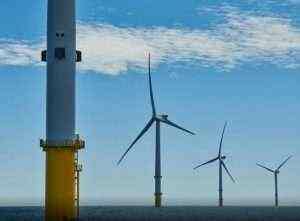
The retention ratio is a converse concept to the dividend payout ratio. The payout ratio is also useful for assessing a dividend's sustainability. Companies are extremely reluctant to cut dividends since it can drive the stock price down and reflect poorly on management's abilities. If a company's payout ratio is over 100%, it is returning more money to shareholders than it is earning and will probably be forced to lower the dividend or stop paying it altogether. Several considerations go into interpreting the dividend payout ratio, most importantly the company's level of maturity.

This ratio is easily calculated using the figures found at the bottom of a company's income statement. It differs from the dividend yield, which compares the dividend payment to the company's current stock price. Dividends are distributed as cash or in the form of reinvestment in additional stock in the company. Usually, a dividend distribution in a company is decided by the company’s board of directors. But the shareholders’ approval is also needed for a company to declare a dividend.
How Do You Calculate the Dividend Payout Ratio?
Below is a short video explanation to help you understand the importance of retained earnings from an accounting perspective. Below is the balance sheet for Bank of America Corporation (BAC) for the fiscal year ending in 2020. Shareholder equity is located towards the bottom of the balance sheet. The decision to retain the earnings or to distribute them among shareholders is usually left to the company management.
If a company pays out too much in dividends and doesn’t have enough cash on hand, it may need to borrow money or issue new shares just to keep up with its obligations. After deducting operating expenses from gross revenue, you’ll arrive at your earnings before interest and taxes (EBIT). To get net income, you then subtract any interest paid on loans and taxes owed. I was a bit surprised when I learned some of the analysts are a bit uneasy when it comes to Unibail’s balance sheet and LTV ratio. For some reason, the market is only now waking up to the risk the higher interest rates are posing on the level of asset valuations. This gives it the ability to take on debt when oil prices are low so it can support its business and dividend through the weak patch.
Dividend Payout Ratio Formula
During the same period, the total earnings per share (EPS) was $13.61, while the total dividend paid out by the company was $3.38 per share. Both revenue and retained earnings are important in evaluating a company’s financial health, but they highlight different aspects of the financial picture. Revenue sits at the top of the income https://online-accounting.net/ statement and is often referred to as the top-line number when describing a company’s financial performance. On the other hand, when a company generates surplus income, a portion of the long-term shareholders may expect some regular income in the form of dividends as a reward for putting their money in the company.
These companies have increased their dividends every year for 50+ years. Net income also refers to an individual's income after taking taxes and deductions into account. I don’t expect it to be more than that, as the complete sale of the US assets would reduce the Net Rental Income by 25% while only reducing the net debt by about 20%. Meanwhile, the increasing cost calculate cost of goods sold of debt on the remaining debt will also weigh on the performance from the ‘residual’ assets. Similarly, the iPhone maker, whose fiscal year ends in September, had $70.4 billion in retained earnings as of September 2018. Charlene Rhinehart is a CPA , CFE, chair of an Illinois CPA Society committee, and has a degree in accounting and finance from DePaul University.
Because the IRS taxes nonqualified dividends at higher rates, investors should consider owning them in a tax-advantaged account like an individual retirement account (IRA). Although for higher-income individuals, there's certainly no harm in owning qualified dividend payers in tax-advantaged accounts to defer or avoid taxes on that income. Business analysts often refer to net income as the bottom line since it is at the bottom of the income statement. Analysts in the United Kingdom know NI as profit attributable to shareholders.
What Is the Retained Earnings Formula and Calculation?
They'll provide the MLP with incremental cash flow, giving it more fuel to increase its distribution. That sizable, sustainable, and growing distribution makes MLPX an attractive investment for income seekers to buy and hold. The energy sector is a great place to hunt for dividends these days. The industry is generating a lot of cash flow thanks to relatively higher oil prices. Meanwhile, valuations remain fairly low, which has pushed up dividend yields. Revenue is the total amount of income generated by the sale of goods or services related to the company's primary operations.
- A dividend is a portion of a company's profits that's distributed to investors.
- The pipeline company currently yields 8.9%, one of the highest payouts in the energy patch.
- Retained earnings could be used for funding an expansion or paying dividends to shareholders at a later date.
- As the company loses ownership of its liquid assets in the form of cash dividends, it reduces the company’s asset value on the balance sheet, thereby impacting RE.
Looking at a company’s historical DPR helps investors determine whether or not the company’s likely investment returns are a good match for the investor’s portfolio, risk tolerance, and investment goals. For example, looking at dividend payout ratios can help growth investors or value investors identify companies that may be a good fit for their overall investment strategy. Calculating the profitability of a company is one of the main goals of fundamental analysis. Considering all incomes and expenses income statement calculate the profit of a company.
Profitability and Return on Equity
This decision typically depends on management’s assessment of what is best for long-term shareholder value. Notably, Enterprise Products' distributable cash flow (DCF) coverage has improved considerably in recent years. For example, its DCF could cover dividends by a solid 1.8 times in the trailing 12 months through the second quarter of this year. DCF is a great metric to gauge how safe an oil stock's dividends are, and Enterprise Products clearly passes the test. That further makes this 7.6%-yielding stock a great bet for income investors. At the end of the period, you can calculate your final Retained Earnings balance for the balance sheet by taking the beginning period, adding any net income or net loss, and subtracting any dividends.

This number appears on a company's income statement and is also an indicator of a company's profitability. Retained Earnings are reported on the balance sheet under the shareholder’s equity section at the end of each accounting period. To calculate RE, the beginning RE balance is added to the net income or reduced by a net loss and then dividend payouts are subtracted. A summary report called a statement of retained earnings is also maintained, outlining the changes in RE for a specific period. The dividend payout ratio is not intended to assess whether a company is a “good” or “bad” investment. Rather, it is used to help investors identify what type of returns – dividend income vs. capital gains – a company is more likely to offer the investor.
Unibail: I'm No Longer Expecting A Meaningful Dividend In 2024
In this case, the formula used is dividends per share divided by earnings per share (EPS). EPS represents net income minus preferred stock dividends divided by the average number of outstanding shares over a given time period. One other variation preferred by some analysts uses the diluted net income per share that additionally factors in options on the company's stock. The changes in a company’s shareholders’ equity over the course of an accounting period are detailed in a statement of stockholders’ equity. When investing in stocks, it’s critical to keep tabs on your shareholders’ equity. It’s a way of expressing the total value of all of the company’s stockholders.
Container lines paid out billions in boom-time profits via dividends - FreightWaves
Container lines paid out billions in boom-time profits via dividends.
Posted: Mon, 21 Aug 2023 20:59:56 GMT [source]
The higher the payout ratio, the harder it may be to maintain it; the lower, the better. For this reason, financial analysts go to great lengths to undo all of the accounting principles and arrive at cash flow for valuing a company. NI flows through the balanced sheet through retained earnings, and through the cash flow in the indirect method. By dividing a company’s current market capitalization by the company’s net income for the last 12 months, the PE ratio can also be derived. A steadily rising ratio could indicate a healthy, maturing business, but a spiking one could mean the dividend is heading into unsustainable territory.
I’m not too concerned about the balance sheet
A company's dividend payout ratio gives investors an idea of how much money it returns to its shareholders compared to how much it keeps on hand to reinvest in growth, pay off debt, or add to cash reserves. The IRS considers most distributions of cash, stock, or property from a company to its shareholders to be taxable income. The tax rate varies depending on the type of dividend and an investor's tax rate. Unlike cash dividends, stock dividends indicate a reallocation of a portion of a company’s retained earnings to the common stock and additional paid-in capital accounts for the benefit of investors. Typically, on December 31st, a company’s balance sheet shows how much money the company has and what kinds of assets it has.
Dividends are typically influenced by various factors such as performance and growth prospects. If a company performs well and generates significant earnings, it may choose to reward shareholders with higher dividends. Conversely, if the business experiences losses or faces challenges that affect profitability, dividend payouts may be reduced.